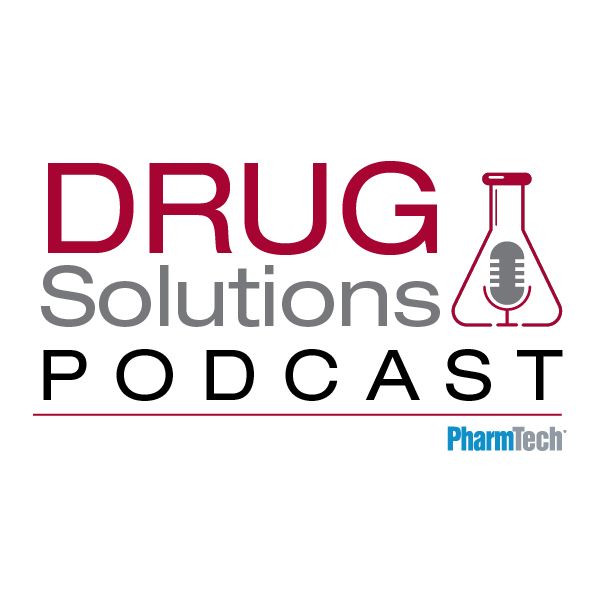Does direct-to-consumer (DTC) pharma advertising help or harm patients? The claim that DTC advertising leads to increased prescription requests, inappropriate drug use, and over-reliance on medication deserves a closer look at what research actually tells us. However, is it true for all health conditions and medications? How has low trust in pharma affected how patients view DTC ads?
The Evidence on Prescription Requests
Past research is unequivocal: DTC advertising does increase prescription requests. Older multiple studies have consistently demonstrated this effect. Patients who see drug advertisements are significantly more likely to ask their doctors about specific medications, and these requests often lead to prescriptions being written.
A landmark study published in JAMA found that standardized patients who requested advertised antidepressants were far more likely to receive prescriptions than those who didn’t make such requests. Other research has shown that physicians feel pressure to maintain patient satisfaction and relationships, which can influence prescribing decisions when patients arrive with specific drug requests in mind.
It’s essential to remember that these studies are dated and, since they were conducted the trust in pharmacy companies has declined significantly.
Key Studies and Reviews
Below are some of the more influential and often‐cited studies or reviews that bear on this question:
| Study / Review | Design / Method | Key Findings Relevant to Your Question | Limitations / Caveats |
|---|---|---|---|
| Kravitz et al. (2005), JAMA — “Influence of patients’ requests for direct-to-consumer advertised antidepressants” | Randomized trial using standardized patients visiting physicians, with scripted “requests” for a brand, general, or no drug request | Physicians were more likely to prescribe when patients “requested” the advertised drug. U.S. Food and Drug Administration+1 | This was a controlled, experimental scenario (not “real life”); it can show that patient requests influence prescribing but not necessarily the full chain from DTC ad → request in practice → overuse. |
| DeFrank et al. (2018) systematic review, BMJ / others — “Direct-to-Consumer Advertising of Prescription Drugs and the Patient–Prescriber Encounter” | Systematic review of ~38 studies (patient- and prescriber-reported) | Found that DTC exposure is associated with increased patient requests for advertised drugs, and that some of these requests are met by physicians, even when appropriateness is uncertain. Also found signals of patients receiving prescriptions for drugs they may not need. PMC | Many included studies rely on self-report, cross-sectional or observational designs, susceptible to bias and confounding. The review notes both potential benefits and harms. PMC+1 |
| Donohue et al. (2007), “A Decade of Direct-to-Consumer Advertising” (NEJM) | Longitudinal / observational | They argue that DTC advertising raises drug utilization and sales, potentially averting underuse in some settings but also raising concerns about overuse. New England Journal of Medicine | Because it is observational, there may be confounding (e.g. more prescribing could drive more advertising rather than the reverse). Also, increases in utilization do not always equate to inappropriate use. |
| “Understanding the Effects of Pharmaceutical Direct-to-Consumer Advertising” (PMC article) | Narrative review / overview | More descriptive than causal;it illustrates mechanisms more than proving them. | Review/commentary |
| “Dangers and Opportunities of Direct-to-Consumer Advertising” (PMC) | Review / commentary | Highlights the risk that ads misrepresent benefit vs risk, push drugs instead of nonpharmacologic options, and lead to overutilization or inappropriate prescribing. Also references the Kravitz trial. PMC | It is a conceptual and narrative synthesis, not a systematic meta-analysis. |
| Self-Reported Responsiveness to DTC Advertising, BMC Health Services Research (2011) | Survey of consumers | People who report being responsive to DTC ads tend to use more prescriptions; more likely to ask physicians about advertised drugs. BioMed Central | Self-report is subject to recall bias, and it is correlational. |
| Gray et al. (2020), “Impact of direct-to-consumer drug advertising during the drug launch period” | Empirical study | Shows that DTC advertising in the initial period of a drug’s launch is associated with increased prescribing of that drug. ScienceDirect | The causality is harder to pin down; initial advertising may be part of a larger marketing push that includes other channels. |
| “Association Between Drug Characteristics and Direct-to-Consumer Advertising” (DiStefano et al., JAMA, 2023) | Cross-sectional analysis of top‐selling drugs, promotional spending, and drug characteristics | They find that DTC advertising is associated with higher patient requests and clinician prescribing (as per summary) and that drugs with lower added clinical benefittend to get a higher share of DTC advertising. JAMA Network+2JAMA Network+2 | Again, this is observational and based on aggregate data — it cannot definitively prove that the advertising causes increased prescribing, though it is suggestive. |
| FDA Survey / Report — “Patient and Physician Attitudes and Behaviors Associated with DTC Promotion” (2004) | Surveys of patients and physicians about their responses to DTC promotion | Showed that many patients report seeking additional info or asking physicians about advertised drugs; physicians reported that they perceived some patient pressure as a result of advertisements. U.S. Food and Drug Administration | Self-report bias, survey limitations, and the fact that reported behavior does not always reflect actual prescribing decisions. |
What About More Recent Studies?
Selected Recent Studies & Analyses
| Study / Analysis | Year / Publication | Key Findings Relevant to DTC Effects | Strengths / Limitations / Caveats |
|---|---|---|---|
| Alpert, et al. (2023) “Prescription Drug Advertising and Drug Utilization” | 2023 | They exploited a “large and plausibly exogenous shock” in DTC advertising to estimate causal effects on utilization, finding that increased advertising is associated with increased use of advertised medications. PubMed Central | The review covers evidence up to 2020; its inclusion of both observational and experimental studies helps triangulate the effects, but many of the underlying studies are older. |
| DiStefano, et al. (2023) “Association Between Drug Characteristics and Direct-to-Consumer Advertising” | 2023 (JAMA) | Among 150 high-selling drugs in 2020, those with lower added clinical benefit were more likely to have a higher proportion of promotional spending allocated to DTC advertising. JAMA Network+1 | This is a cross-sectional, correlational analysis, so it cannot show that DTC causes overprescribing or inappropriate use. However, it supports the hypothesis that DTC is used strategically for “marginal” drugs. |
| Franquiz, et al. (2020) “Direct-to-Consumer Drug Advertisement and Prescribing” | 2020 | Reviews evidence (observational and experimental) that DTC increases prescription requests, the likelihood of prescribing, and both appropriate and inappropriate prescribing. PubMed Central | Valuable addition because it uses quasi-experimental methods. |
| Alpert, et al. (2023) — nm (same as first entry) | 2023 | (As above) The study provides evidence of utilization increases tied to DTC. PubMed Central | Found that DTC advertising is driving some patients to discuss specific products with their providers, though most patients did not perceive advertising to affect their patient–provider interactions negatively. U.S. Food and Drug Administration |
| CSRxP Analysis (2025) | 2025 | Their report (non–peer reviewed) estimates that a 10% increase in DTC advertising is associated with a 1–2.3% increase in drug spending. CSRxP | This is an aggregate, modeling approach (and advocacy-affiliated), so its estimates depend heavily on assumptions. Still, it provides a recent quantification. |
| “Spending on Consumer Advertising for Top-Selling Prescription Drugs in US Favors Those With Low Added Benefit” | 2023 (Johns Hopkins / public health communication) | Highlights that DTC budgets tend to favor drugs with lower added benefit, suggesting strategic marketing of drugs that clinicians might otherwise under-utilize. Johns Hopkins Public Health | This is descriptive (not causal), but reinforces concerns about the nature of drugs being marketed via DTC. |
| “Impact of Direct-to-Consumer Pharmaceutical Advertising on Social Media” (Review) | ~2024 / 2025 | Surveys the rise of DTC via social media, and notes that such advertising can influence attitudes, increase engagement, and possibly increase demand. ResearchGate | Social media ads are newer and less well understood; effects may differ in magnitude or mechanism (e.g. more subtle influence) compared to TV/radio DTC. The review is relatively recent but depends on limited, heterogeneous studies. |
| U.S. FDA / CDER Completed Research Projects | 2024 | Found that DTC advertising is driving some patients to discuss specific products with their providers, though most patients did not perceive advertising to negatively affect their patient–provider interactions. U.S. Food and Drug Administration | This is more on patient perceptions and behavior than prescribing outcome per se, but it supports part of the “ad → request → discussion” chain. |
Do These Studies “Really” Show Increased Rx Requests and Inappropriate Use?
Putting the more recent evidence in context:
- Stronger Causal Leveraging
The Alpert et al. (2023) study is an invaluable addition, as it strengthens the argument that DTC causes higher utilization (rather than merely correlates with it) by exploiting an exogenous shock in advertising. That addresses one of the central methodological criticisms of older studies. PubMed Central - Strategic Targeting of Lower-Benefit Drugs
The DiStefano et al. (2023) results are consistent with the concern that DTC is disproportionately used to push drugs that may deliver less additional benefit than alternatives. That doesn’t prove harm in every case, but it bolsters the view that DTC may push marginal use. JAMA Network - Aggregate Spending Effects
The CSRxP modeling suggests that advertising increases overall drug spending, which is indirectly consistent with more prescribing or higher rates of usage. But models have to rely on assumptions (elasticities, substitutability, spillovers, etc.). CSRxP - Patient → Provider Communication
The FDA’s research confirms that some patients see ads and then mention specific drugs to their doctors. That is a key step in the chain from advertising to prescription. U.S. Food and Drug Administration - Social Media & New Modalities
The shift of DTC into digital and social media is a newer front. As those channels mature, their influence may become more potent or more complex to regulate. The review suggests that consumers’ attitudes and engagement can be shaped via new media. ResearchGate - Limitations Still Persist
- Even in the newer studies, many are observational or descriptive (particularly those about promotional spend, drug characteristics, or patient perceptions).
- Quasi-experimental designs, like Alpert et al., are stronger, but may be limited in scope (one shock, one drug class, or one context).
- The degree to which increased utilization is inappropriate (versus medically reasonable) remains harder to establish.
- Effects may vary widely by drug type, disease area, clinical context, and patient populations.
Inappropriate Drug Use: A More Complex Picture
The question of whether DTC advertising leads to “inappropriate” drug use is more nuanced and depends heavily on how we define inappropriate.
Research has documented concerning patterns. Studies have found instances where:
- Patients received prescriptions for conditions they didn’t actually have after requesting advertised medications
- Brand-name drugs were prescribed when equally effective generic alternatives existed
- Medications were prescribed when lifestyle modifications or non-pharmaceutical interventions would have been more appropriate first-line treatments.
However, some research suggests a more mixed picture. Proponents argue that DTC advertising can prompt people with undertreated conditions—particularly depression and high cholesterol—to seek needed medical care. A study in the American Journal of Public Health found that increased DTC advertising was associated with improved diagnosis and treatment of depression, which could represent previously undiagnosed patients finally getting help.
The appropriateness question ultimately hinges on whether the benefits of increased diagnosis of undertreated conditions outweigh the risks of overtreatment and unnecessary medication use. The research suggests that both outcomes occur, making it difficult to make blanket statements.
Medication Over Lifestyle Changes
Perhaps the most substantiated concern is that DTC advertising emphasizes pharmaceutical solutions while downplaying or ignoring lifestyle modifications. Content analyses of the advertisements themselves support this criticism.
Research examining DTC ads has found that:
- Lifestyle changes are rarely mentioned as alternatives to medication
- When lifestyle modifications are mentioned, they’re typically presented as adjuncts to medication rather than potential alternatives.
- The ads create a framing where medication is the default solution to health problems.
A study in the Journal of General Internal Medicine found that DTC advertising reinforces a “pill for every ill” mentality, potentially undermining public health messages about diet, exercise, stress management, and other behavioral interventions. This is particularly concerning for conditions like type 2 diabetes, hypertension, and high cholesterol, where lifestyle changes can be highly effective.
However, it’s worth noting that responsibility for discussing lifestyle interventions should also fall to healthcare providers during clinical encounters, rather than solely relying on pharmaceutical advertisements designed to sell products.
The Broader Context
What makes this issue particularly complex is that the research shows both harms and potential benefits, and these may affect different populations differently. For someone with undertreated depression who sees an ad and finally seeks help, DTC advertising may have provided a genuine benefit. For someone with prediabetes who gets prescribed medication when diet and exercise changes would be more appropriate, the same advertising system has failed them.
The medical community itself remains divided. The American Medical Association has called for a ban on DTC advertising, citing concerns about driving demand for expensive medications and interfering with the doctor-patient relationship. Meanwhile, pharmaceutical companies argue that their ads educate consumers and encourage people to seek medical care.
The Verdict
So is the claim valid? It depends on the health condition, medication, and cost.
Solidly supported by research:
- DTC advertising can prescription requests but it’s contingent upon health condition, cost, and the physician’s willingness to prescribe.
- It emphasizes medication over lifestyle changes (Patients prefer pills over lifestyle changes)
- It can lead to prescriptions in some cases, where they may not be the most appropriate first-line intervention (The physician is the gatekeeper)
More complex than simple claims suggest:
- “Inappropriate” use exists, but so does increased diagnosis of undertreated conditions
- The net public health impact likely varies by therapeutic category and patient population
- The extent to which DTC advertising versus other factors (physician behavior, healthcare system incentives) drives overuse is challenging to isolate
So the claim, DTC advertising contributes to increased prescription requests, inappropriate drug use, and a reliance on medication over lifestyle changes, is partly validated by empirical research — particularly for the prescription-request part — though the second and third components (inappropriate use, substitution of lifestyle changes) are more contested and harder to prove.
It has been my experience, over the last few years, that DTC TV spots provide a poor ROI because of the low trust of pharma and the cost of branded drugs. However, certain medications and health conditions have a higher ROI if patients use them as “lifestyle” change agents.
What is needed is an updated study on what target audiences do when they are exposed to DTC ads. Anyone who thinks they run out to ask for a prescription is delusional. Today, patients often go online to research medications before making a decision, and then they still discuss it with their doctor.
The other challenge is the use of fair balance in TV ads. Does the FDA really believe patients make a decision of a medication based on TV ad fair balance?










